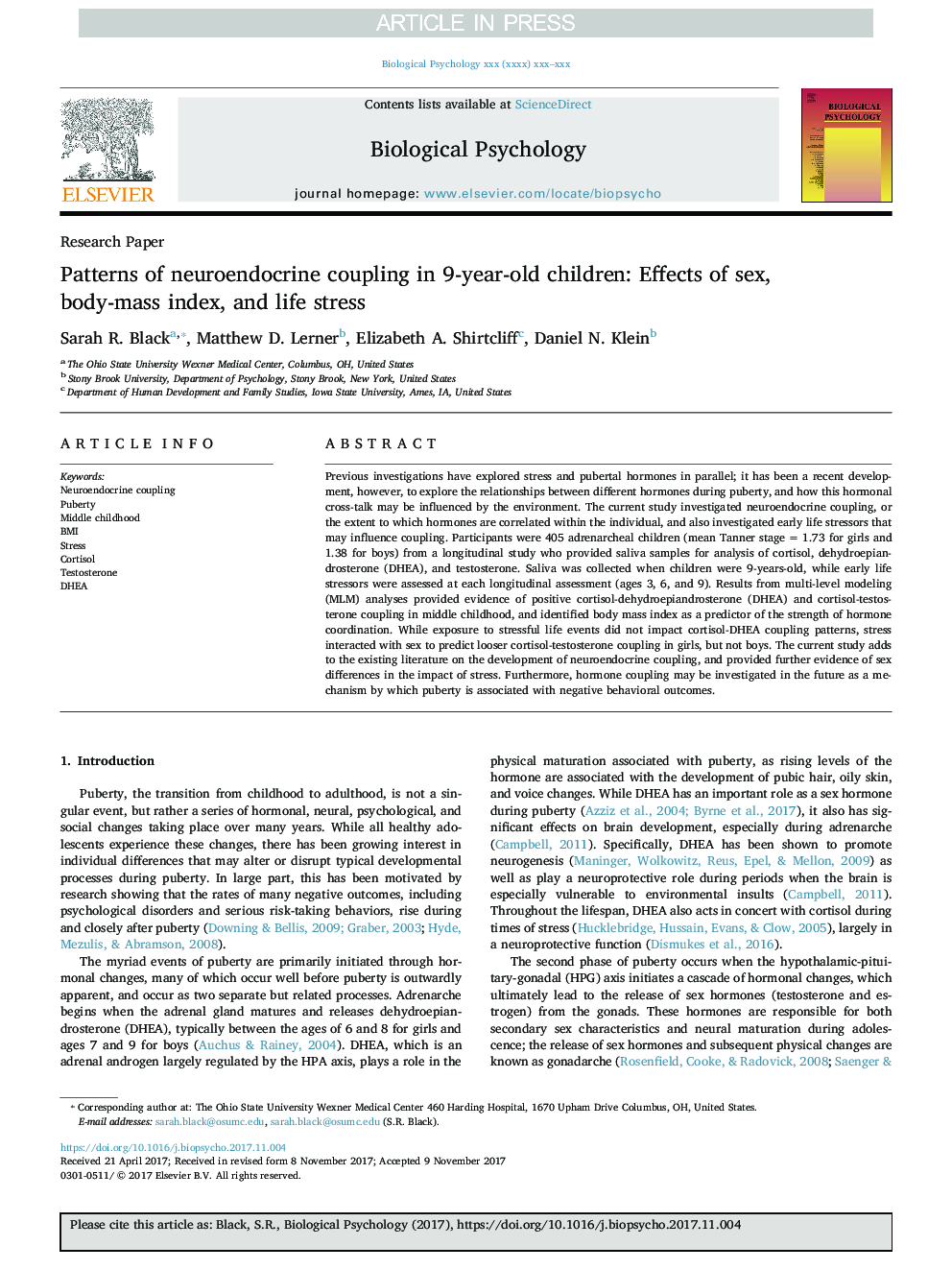| کد مقاله | کد نشریه | سال انتشار | مقاله انگلیسی | نسخه تمام متن |
|---|---|---|---|---|
| 7278217 | 1473842 | 2018 | 8 صفحه PDF | دانلود رایگان |
عنوان انگلیسی مقاله ISI
Patterns of neuroendocrine coupling in 9-year-old children: Effects of sex, body-mass index, and life stress
ترجمه فارسی عنوان
الگوی جفتگیری نوروآندوکرین در کودکان 9 ساله: تأثیر جنسی، شاخص توده بدن و استرس زندگی
دانلود مقاله + سفارش ترجمه
دانلود مقاله ISI انگلیسی
رایگان برای ایرانیان
کلمات کلیدی
موضوعات مرتبط
علوم زیستی و بیوفناوری
علم عصب شناسی
علوم اعصاب رفتاری
چکیده انگلیسی
Previous investigations have explored stress and pubertal hormones in parallel; it has been a recent development, however, to explore the relationships between different hormones during puberty, and how this hormonal cross-talk may be influenced by the environment. The current study investigated neuroendocrine coupling, or the extent to which hormones are correlated within the individual, and also investigated early life stressors that may influence coupling. Participants were 405 adrenarcheal children (mean Tanner stage = 1.73 for girls and 1.38 for boys) from a longitudinal study who provided saliva samples for analysis of cortisol, dehydroepiandrosterone (DHEA), and testosterone. Saliva was collected when children were 9-years-old, while early life stressors were assessed at each longitudinal assessment (ages 3, 6, and 9). Results from multi-level modeling (MLM) analyses provided evidence of positive cortisol-dehydroepiandrosterone (DHEA) and cortisol-testosterone coupling in middle childhood, and identified body mass index as a predictor of the strength of hormone coordination. While exposure to stressful life events did not impact cortisol-DHEA coupling patterns, stress interacted with sex to predict looser cortisol-testosterone coupling in girls, but not boys. The current study adds to the existing literature on the development of neuroendocrine coupling, and provided further evidence of sex differences in the impact of stress. Furthermore, hormone coupling may be investigated in the future as a mechanism by which puberty is associated with negative behavioral outcomes.
ناشر
Database: Elsevier - ScienceDirect (ساینس دایرکت)
Journal: Biological Psychology - Volume 132, February 2018, Pages 252-259
Journal: Biological Psychology - Volume 132, February 2018, Pages 252-259
نویسندگان
Sarah R. Black, Matthew D. Lerner, Elizabeth A. Shirtcliff, Daniel N. Klein,
